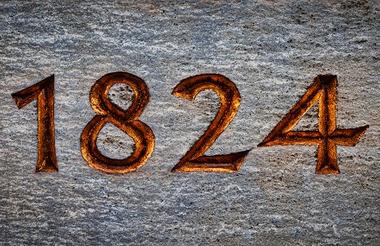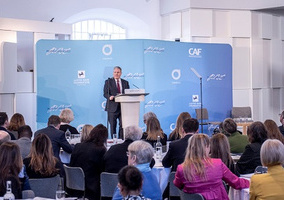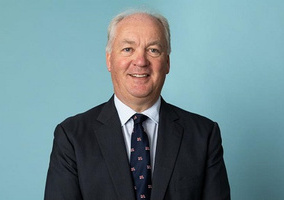Two of the largest and best-known charities in the country are celebrating their 200th birthdays this year. But why were both the RNLI and RSPCA founded in 1824? Was there a particularly fertile ground for charities that year? Were there key figures involved in the creation of both charities? Or was it all just a big coincidence?
A café and a pub
Let’s start at the beginning. RNLI celebrated its 200th anniversary earlier this year on 4 March, two centuries to the day since it held its first official meeting. This also happens to be the exact same day John Cadbury, who had founded RSPCA forerunner the Animals Friend Society, began to sell cocoa and drinking chocolate from a grocer’s shop in Birmingham.
RNLI founder William Hillary had been inspired to draw up plans for a lifeboat service after HMS Racehorse was wrecked on a reef of rocks off the Isle of Man, where he lived, in 1822. Six men from the ship and three rescuers had drowned.
In February 1823, Hillary proposed the creation of a national organisation in a pamphlet called An Appeal to the British Navy on the Humanity and Policy of Forming a National Institution for the Preservation of Lives and Property from Shipwreck. However, he did not receive government backing for his proposals.
After appealing to some philanthropists for support, Hillary finally established the RNLI as the National Institution for the Preservation of Life from Shipwreck on 4 March 1824 at the group’s second meeting in the London Tavern, Bishopsgate Street, London.
An article in RNLI’s Lifeboat magazine in 1924 gives an account of the first meeting 100 years earlier: “Yesterday, a Meeting of Noblemen and Gentlemen took place at the City of London Tavern, at one o'clock, for the purpose of establishing a National Institution for the preservation of lives in cases of Shipwreck, affording such relief as the necessities of the persons may require, and bestowing reward on those who may exert themselves in saving the lives of their fellow-creatures.”
Three months after the RNLI was founded in a pub, the RSPCA held its first meeting in a café.
The Cruel Treatment of Cattle Act 1822 had been passed two years earlier as the first-ever law protecting animals.
Irish MP Richard Martin, nicknamed Humanity Dick, had helped to get the law passed so the legislation was often called Martin’s Act.
Martin was one of 22 people including fellow founder Reverend Arthur Broome who met at Old Slaughter’s Coffee House in London on 16 June 1824 at the RSPCA’s first meeting where it was formed as the Society for the Prevention of Cruelty to Animals.
The SPCA was launched five years before the police force, with its inspectors given uniforms and truncheons before Robert Peel’s Metropolitan Police Act of 1829.
Founder members
So, was there a connection in the personnel that set up the RNLI and RSPCA?
You might think their royal names indicate that a monarch played a role in their creation. King George IV, monarch in 1824, indeed granted RNLI royal assent and became its patron that year. Every monarch since, including King Charles III, has inherited the role.
However, RSPCA had to wait until 1840 for Queen Victoria to give permission for the Society for the Prevention of Cruelty to Animals to add “Royal” to its name.
But there were others involved in both charities from the beginning.
MP John Ashley Warre and former lord mayor of London Alderman George Bridges were both at the founding meetings of the RSPCA and RNLI. Banker and philanthropist Samuel Gurney was also a founder member of both charities.
Many of these figures are noted in Lifeboat magazine’s account of RNLI’s first meeting, plus perhaps the most famous person who played a role in the formation of both charities, another abolitionist, William Wilberforce.
Wilberforce
Conservative MP Wilberforce led the parliamentary campaign against the British slave trade in the late 18th century for 20 years until the passage of the Slave Trade Act in 1807.
He continued to support a campaign for the complete abolition of slavery until his death in 1833, the same year the Slavery Abolition Act was passed.
However, in 1824, aged 64, he also had a hand in setting up both RNLI and RSPCA.
According to Lifeboat magazine, Wilberforce said at the inaugural RNLI meeting: “Let us place ourselves in the situation of those persons who have to expose their lives to peril and hardship, and who may at a moment of danger, though never thinking of themselves, be somewhat slow in risking their lives, if they are to leave behind them their families unprovided for, and who would cheerfully hasten to brave storms and mountain waves when called by the voice of distress, and when conscious that their wives, though widowed, would not be forsaken — and that their children, though fatherless, would not be forsaken orphans. For such it was their duty, the duty of the opulent, to provide.”
But he is more commonly associated with the RSPCA as one of its founders. Indeed, the charity’s recently changed logo is written in a typeface named after him, Wilberforce Sans. It also recently began holding an annual Wilberforce lecture on the role of animals in society.
Women
So, some of the same people were involved in setting up both the RNLI and RSPCA, but it is fair to say that pretty much all of them were men.
This contrasts to other animal protection charities founded in the 19th century, with Mary Tealby setting up Battersea (then called the Temporary Home for Lost and Starving Dogs) in 1860 and Emily Williamson, Eliza Phillips and Etta Lemon establishing the organisations that would become RSPB.
However, RSPCA set up a ladies committee in 1829 and philanthropist Angela Burdett-Coutts became its vice-patron in 1839, using her money and status to help prevent cruelty to animals, before becoming the first president of its Ladies’ Humane Education Committee in 1870, which had powers to form branches, many of which were designated as local “ladies’ associations”.
The first women were appointed to the RSPCA’s principal governing executive in about 1906, when branch representatives were first elected. This was largely through the efforts of suffragist Eleanor Penn Gaskell, who was one of the first women on the RSPCA council.
Ninette Gold and Pat Jones became its first-ever female officers in 1952.
Now, six of RSPCA’s executive leadership team are women, as are over 60% of its frontline officers.
It has had one female executive leader, from 2002 to 2007 – former Liberal Democrat MP Jackie Ballard was its director general.
At RNLI, meanwhile, Grace Darling was the first woman to receive a bravery medal from the charity in 1838, 14 years after it was founded, having risked her life rowing to rescue stranded survivors of a wrecked steamship called Forfarshire.
From 1865, a number of women helped to launch lifeboats from RNLI stations including at Dungeness.
In 1904, Letita French became the first woman to manage an RNLI lifeboat station, which she did voluntarily for 24 years in Palling, Norfolk.
The first woman to join an RNLI lifeboat crew was 18-year-old Norwegian student Elizabeth Hostvedt in 1969.
Today, around 14% of RNLI lifeboat station crew and 31% of its lifeguards are women, as are three of the six members of its executive team. The charity is chaired by Janet Legrand but it has not yet employed a female CEO.
Funding changes
Following the Southport and St Anne’s lifeboats disaster in 1886, RNLI held its first ever charity street collection in 1891 when married couple Charles and Marion Macara organised a fundraising event in Manchester.
After the street collection’s success, Charles Macara looked into the finances of the RNLI and realised that it relied heavily on the wealthy few.
He resolved to take RNLI fundraising to the people on the street and arranged annual Lifeboat Saturdays events, originally in Manchester before spreading to other towns and cities.
Following the first such event, Marion Macara formed a ladies’ guild to help organise the street collection and within 10 years more than 40 had sprung up around the UK and Ireland, and the RNLI’s income had doubled.
This activity laid the foundations of the charity’s voluntary public fundraising, which has continued to this day. It now brings in over £200m a year, the vast majority of which is fundraised.
RSPCA has similarly evolved to rely more on the many rather than the few. Since its foundation, the charity’s core income has come from subscriptions, donations and legacies. However, these were all relatively small, variable and risky as they depended on just a few individuals.
As a result, the charity struggled financially in the 1820s and 1830s, with several members of its committee offering their own money as gifts or loans.
Nowadays, RSPCA brings in more than £150m a year, most of which comes from public donations and legacies.
Another 200 years?
Emily Tierney, RSPCA’s director of strategy and transformation, says she expects the charity to exist in another 200 years’ time but the shape and nature of its work must keep adapting, as it has since 1824.
As RSPCA’s first executive team member to go on maternity leave, Tierney says the charity’s staff inclusion policies have developed since it was founded as well as its campaigning activity.
“Our organisation needs to reflect the society that we are trying to engage and mobilise for animals. And I think there are definitely examples of how over the years that hasn’t been the case. And so there is a strong movement for us to make sure it is inclusive and welcoming but also that it’s bolder and braver.
“We were set up to protect animals, change minds and attitudes. That is the movement that was sparked, that is still what we're doing, that is still the core of our work. But what the organisation needs to do and focus on for the future, isn’t all the same challenges that the founders were facing. The structures around us, and the problems for animals have also changed. And we want the organisation to be responsive to that.”
RNLI also expects to keep operating for many years to come. “All the while there is a need for lives to be saved in and around our waters, there will be a need for the RNLI,” a spokesperson says.
They said the charity had lasted so long because of its ability to innovate and adapt while maintaining a volunteering ethos.
“In the years to come, innovation and developments in technology will continue to change our ways of operating and the lifesaving equipment we use – it is important we continue to explore and embrace new technology, to remain effective and efficient and ensure we provide the best lifesaving service we can, while making the best use of our donors’ money.”
Related Articles












